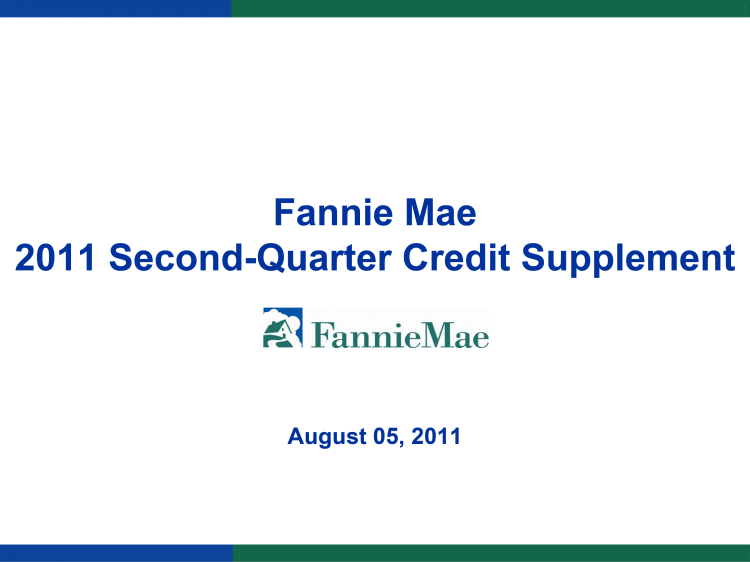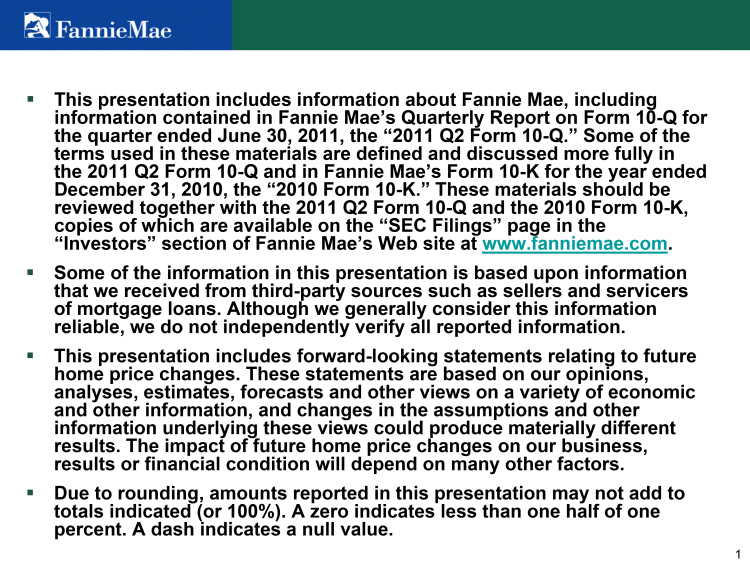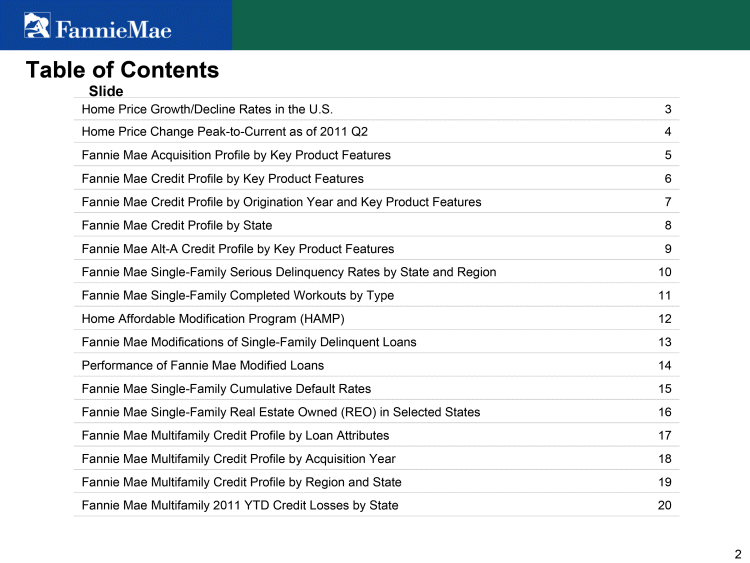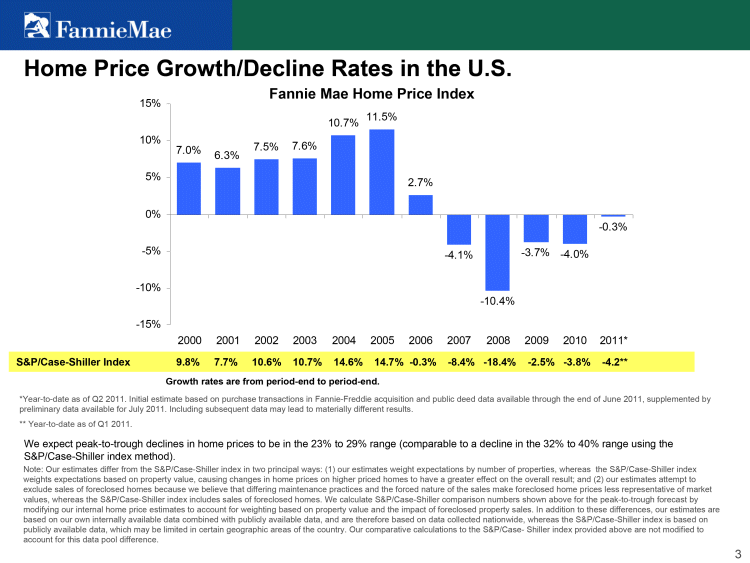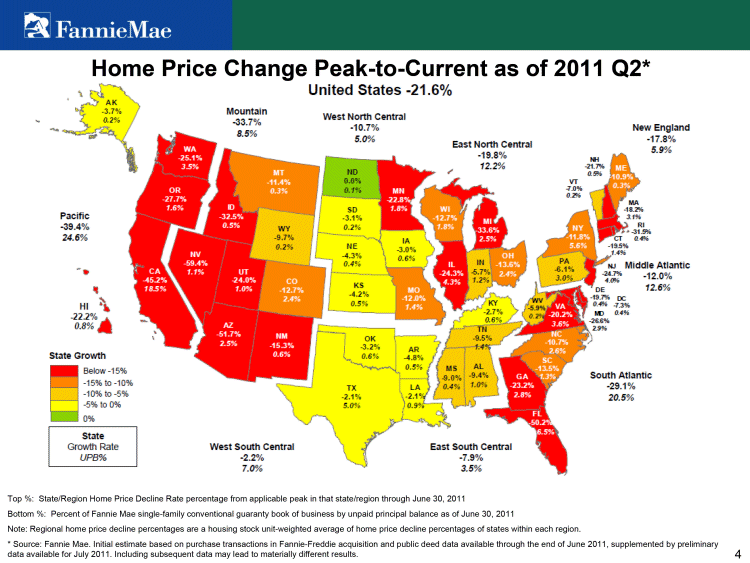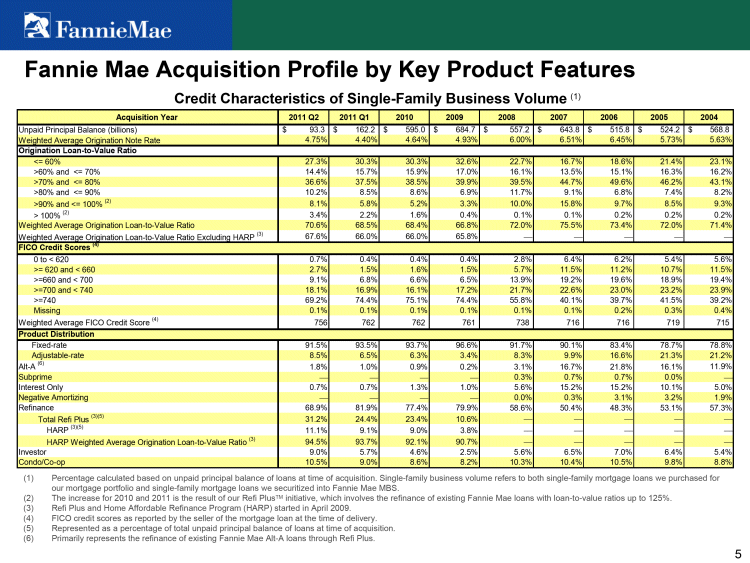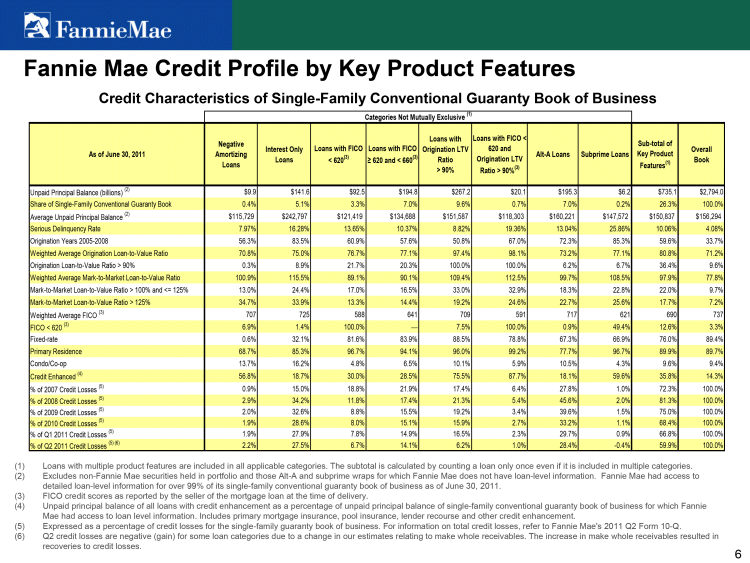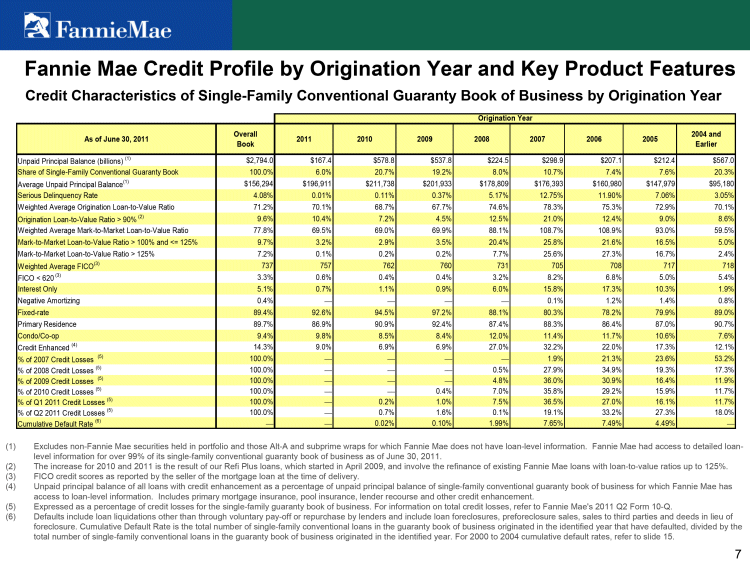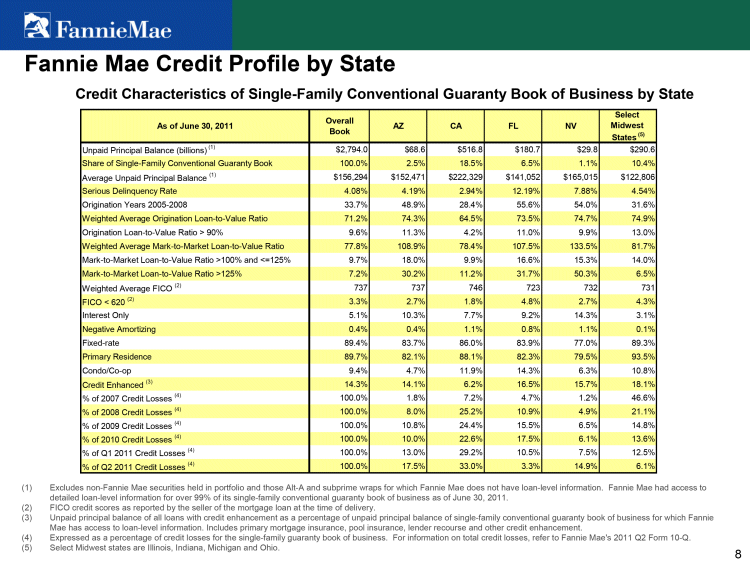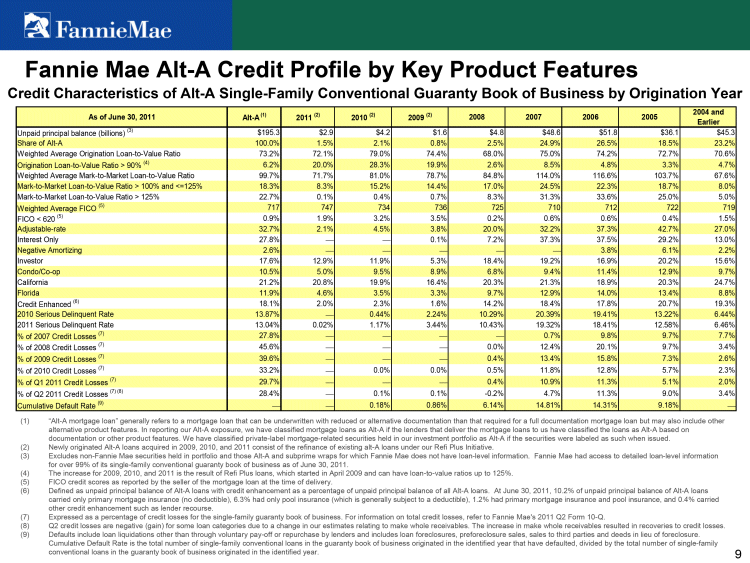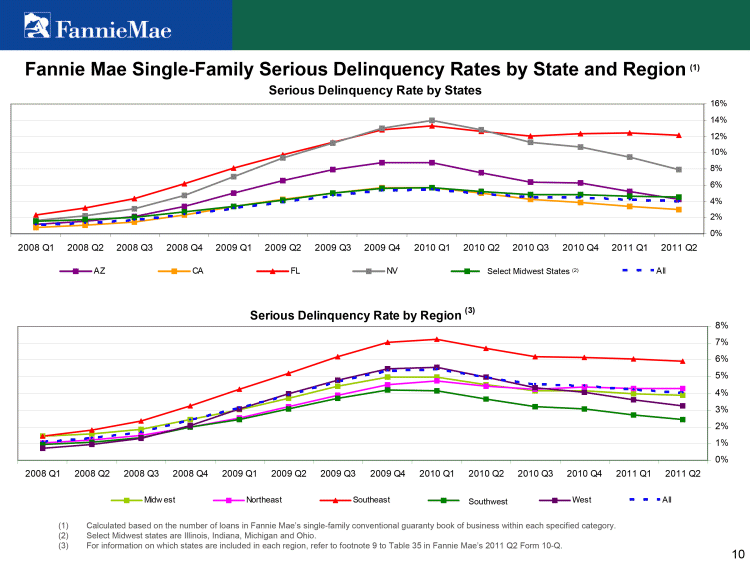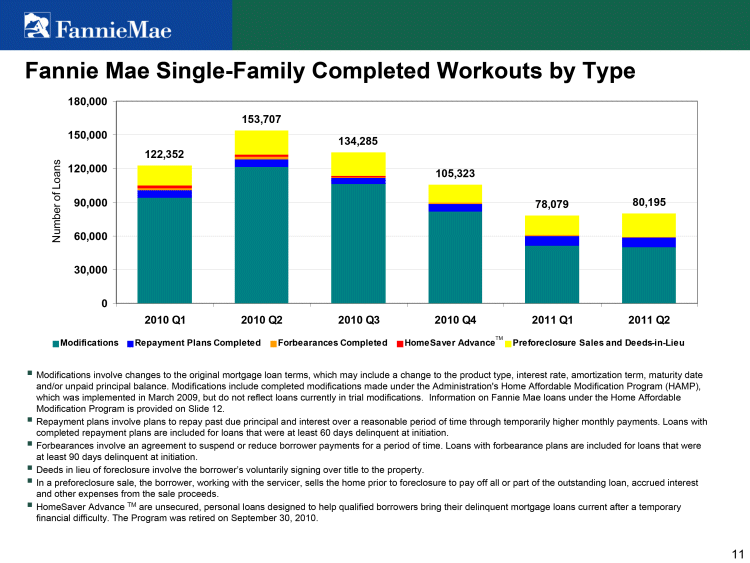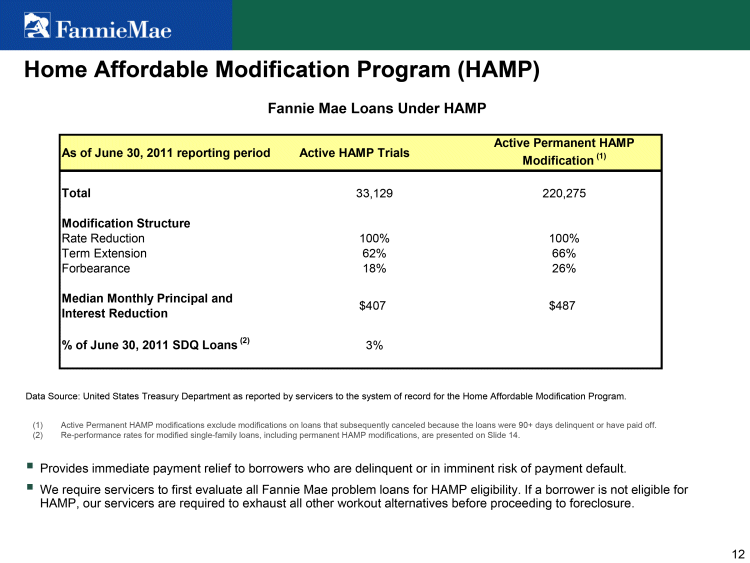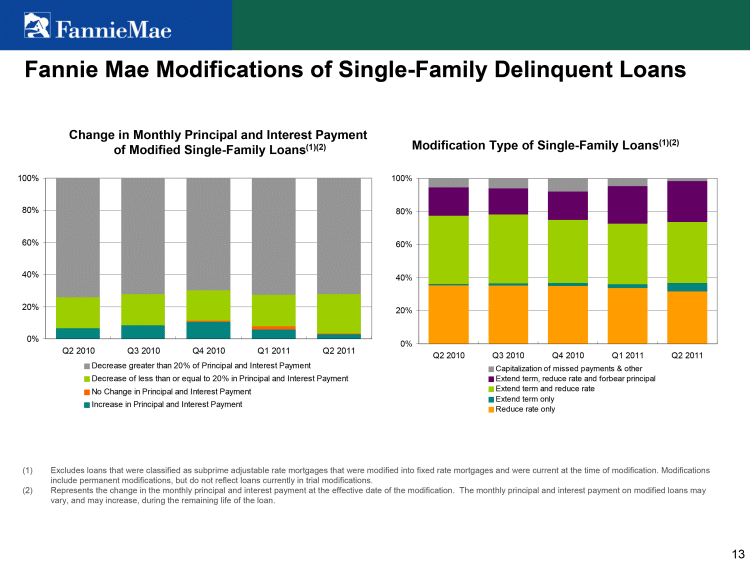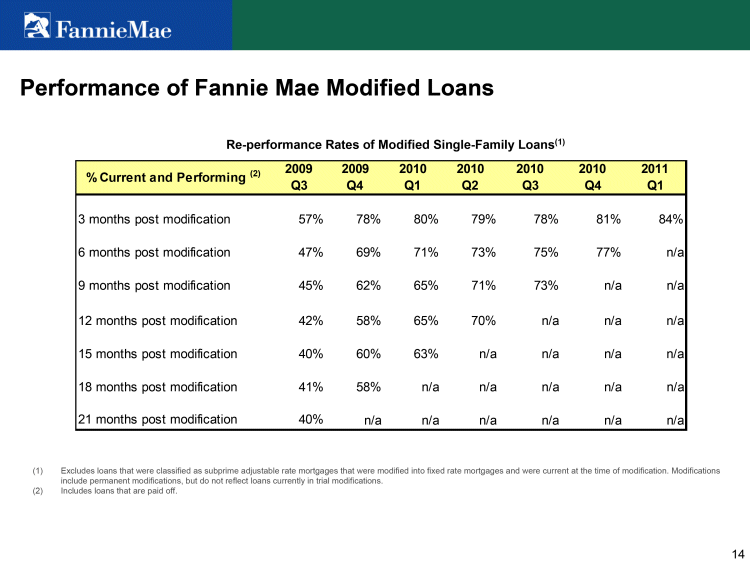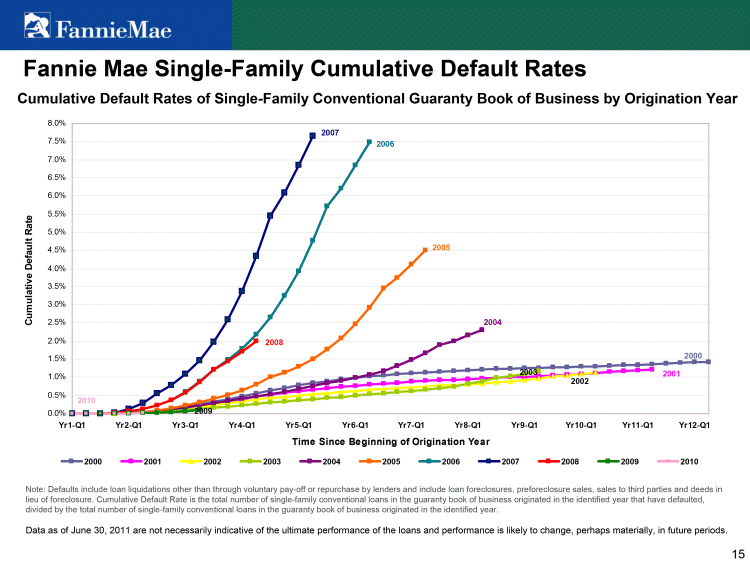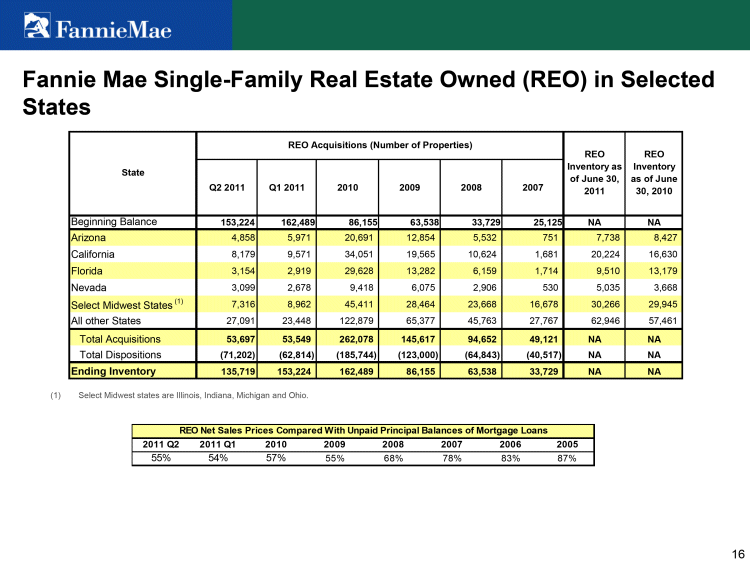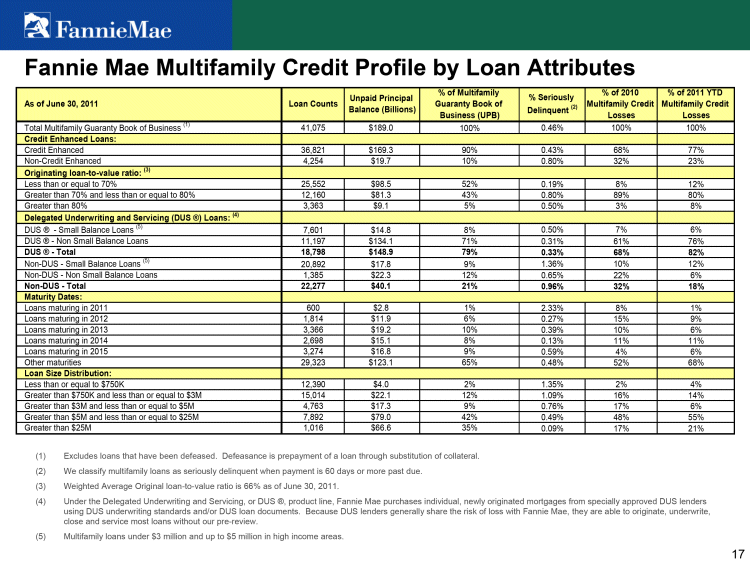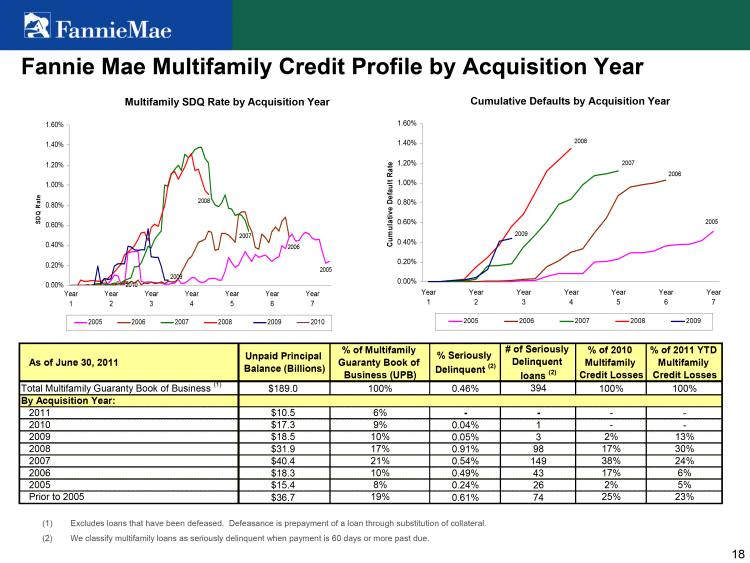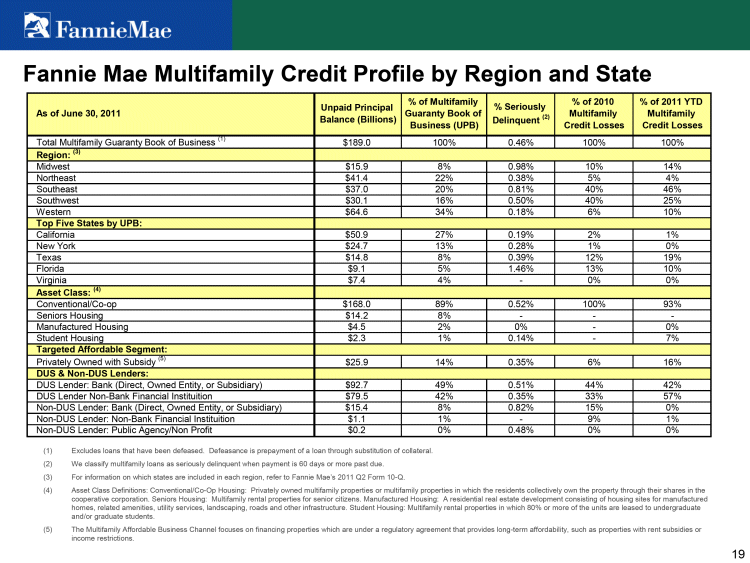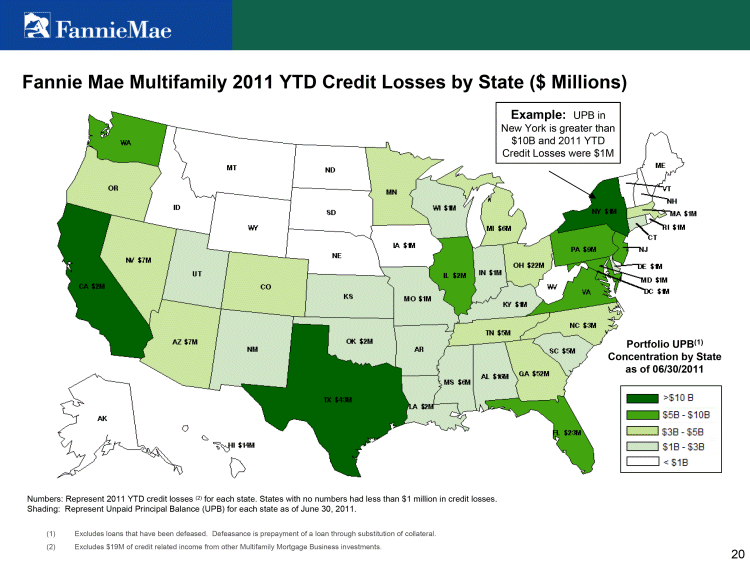Free signup for more
- Track your favorite companies
- Receive email alerts for new filings
- Personalized dashboard of news and more
- Access all data and search results
Filing tables
Filing exhibits
FNMA similar filings
- 30 Nov 11 Entry into a Material Definitive Agreement
- 8 Nov 11 Fannie Mae Reports Third-Quarter 2011 Results
- 8 Aug 11 Other Events
- 5 Aug 11 Fannie Mae Reports Second-Quarter 2011 Results
- 22 Jun 11 Departure of Directors or Certain Officers
- 16 Jun 11 Departure of Directors or Certain Officers
- 6 May 11 Fannie Mae Reports First-Quarter 2011 Results
Filing view
External links
